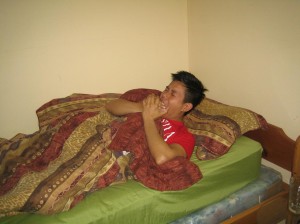Children who go to school often develop illnesses that can lead to postnasal drip. Even though it is not usually a cause of concern, it can lead to discomfort and even complications such as ear and sinus infections if not treated.
For those who are uncertain on what this condition is all about, it is important to schedule an appointment with a doctor so that a diagnosis is given as well as the appropriate treatment.

Symptoms of postnasal drip
Children who suffer from postnasal drip tend to sniffle frequently and have runny nose that freely flows. The condition among children can also cause a sore throat and coughing that can eventually lead to difficulty with eating and swallowing. Additionally, children will also have diminished appetite while toddlers and babies will refuse the breast or bottle.
Causes of postnasal drip
Those who have respiratory infections such as common cold can develop postnasal drip for several weeks. Even seasonal allergies can also be considered as a cause of the condition among children.
Children who have bronchitis, pertussis, chickenpox or rubella are likely to develop postnasal drip.
Important considerations to bear in mind
It is a known fact that young children are not capable of explaining any of the symptoms or inform their parents what they are feeling. Parents and caregivers must be careful in observing young children and babies who have runny noses and other respiratory issues. Take note that postnasal drip can make children irritable and even distracted as well as experiencing sleeping difficulties.
Home remedies for postnasal drip
Children who suffer from postnasal drip can greatly benefits from the classic cold remedy of chicken soup or chicken broth. It is important to provide children with plenty of liquids such as hot cocoa, orange juice, water and sports drinks that can help soothe the sore throat and thin the mucous. Additionally, children can also benefit by spending time in a steamy bath or breathing in air that is moistened by a humidifier. These are some of the first aid measures that you can perform at home to help relieve the condition.
In some cases, saline nasal sprays or nasal irrigation can be used in order to flush out excess mucus, allergens, bacteria and other irritating substances from the sinuses. You can also prop up pillows at night so that the mucus will not accumulate in the back of the throat.
For those with allergies, the triggers can be reduces by covering the mattresses and pillowcases with covers that are dust-proof, washing all sheets in hot water, regular vacuuming and dusting as well as using special HEPA air filters at home.
Medical treatment for postnasal drip
Children with postnasal drip that interferes with daily activities or does not get better after the home remedies would require medical treatment. The doctor will prescribe antibiotics for postnasal drip that is caused by bacterial infections. Even antihistamines or an allergy shot can be prescribed especially those that are caused by seasonal allergies.
